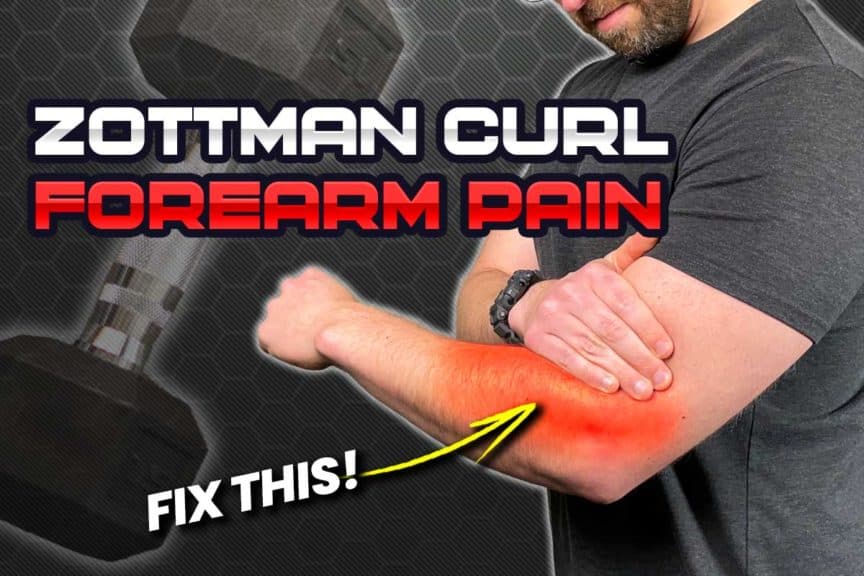The Zottman curl might not be the most popular curl out there, but it serves its purpose and can be worth its weight in gold when it comes to building a set of robust arms. But it’s hard to beef up your arms with this curl if it’s causing all the wrong types of pain. Thankfully, this article has got you covered for understanding the common causes of pain and discomfort with this curl.
The Zottman curl most often causes pain in the forearm or elbow due to the excessive demand it places on the extensor muscles of the forearm. Solutions involve understanding proper tendon loading, modifying your training variables and implementing proper recovery methods for your forearms.
Of course, there are a few other reasons why your forearms might not be tolerating this curl. So, if you want to become better educated as a lifter and overcome the annoying forearm pain you’re experiencing, keep on reading!
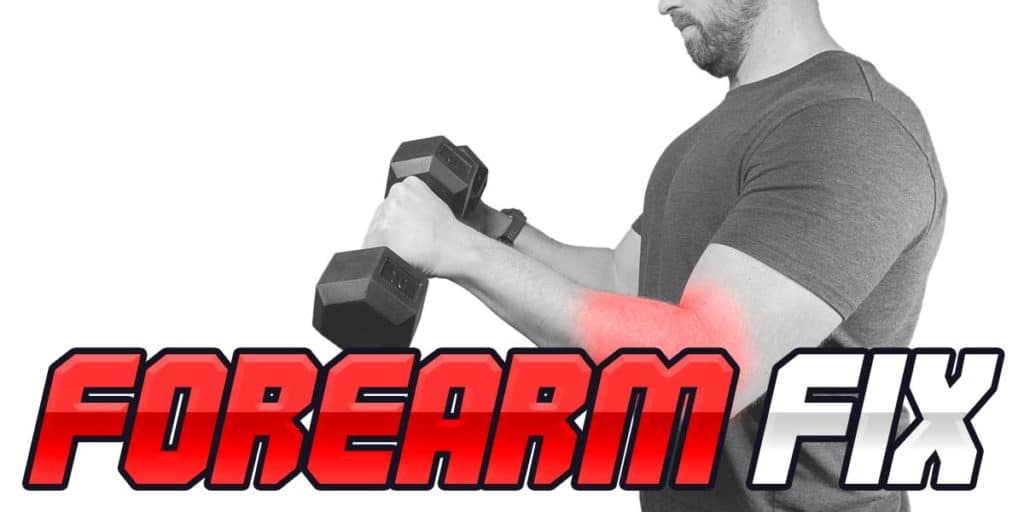
ARTICLE OVERVIEW (Quick Links)
Click/tap on any of the headlines below to instantly read that section!
• Basic forearm anatomy
• Repetitive strain injuries
• Dealing with nerve tension
• How to keep on curling (strategies)
Basic forearm anatomy
Any time you’re trying to overcome pain or dysfunction, acquiring a basic understanding of the anatomy of the affected area is the critical first step to take; it will help you understand the “why” and “how” of the issue at hand and the rationale for what it will take to get things back on track.
Muscles of the forearm
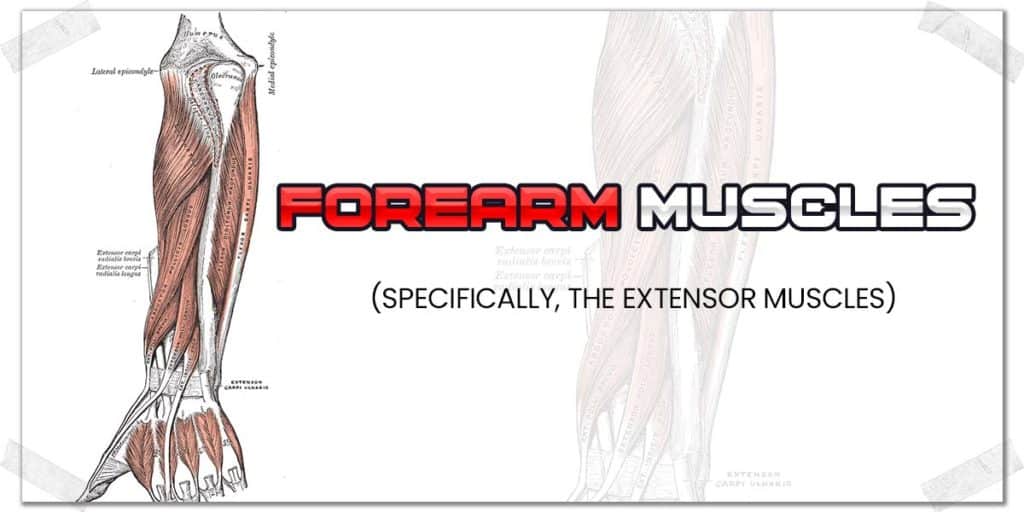
There’s no need to go into great detail with all the forearm muscles (there are 20 of them in total). Instead, I’m going to focus on the group of muscles that are most likely to be causing your pain: the forearm extensors.
The forearm extensors are a group of muscles that pull your wrist backwards. Or, during the downward phase of the Zottman curl, work to prevent the wrist from flexing (bending) forwards. These muscles start above the elbow joint, right at the base of the humerus (on a little “knob” known as the lateral epicondyle). Each of these muscles runs down the back of the forearm with their respective tendon. Ultimately, they cross the wrist and attach somewhere on the backside of the hand. Therefore, the resulting mechanism of action when the muscles contract is the extension of the wrist (pulling it backwards).
Where things tend to go wrong with these muscles (especially with Zottman curls) is at the origin of where these extensor tendons attach to the upper arm bone (the common extensor origin). More on that in a bit.
Joints of the elbow
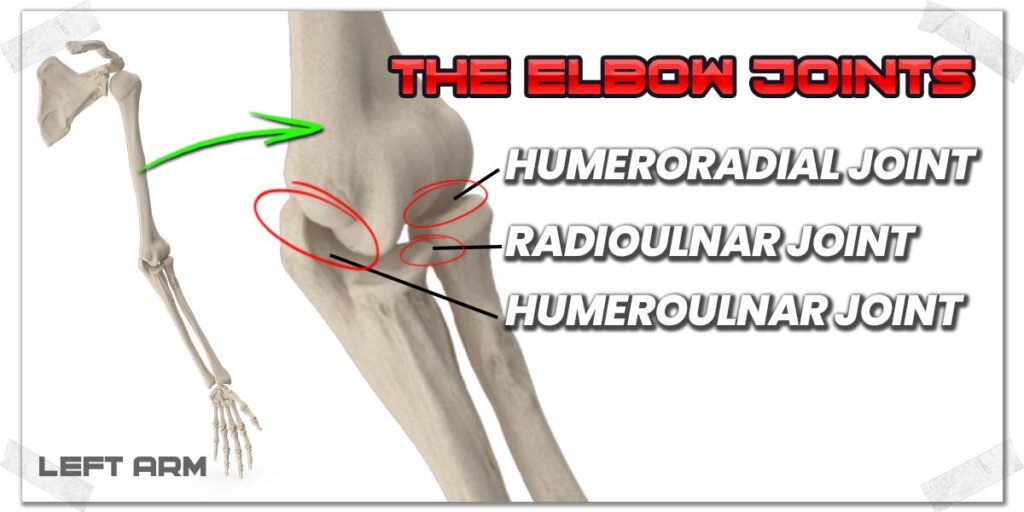
The elbow joint itself is actually comprised of three separate joints:
- The humeroulnar joint
- The humeroradial joint
- The radioulnar joint
The radial nerve
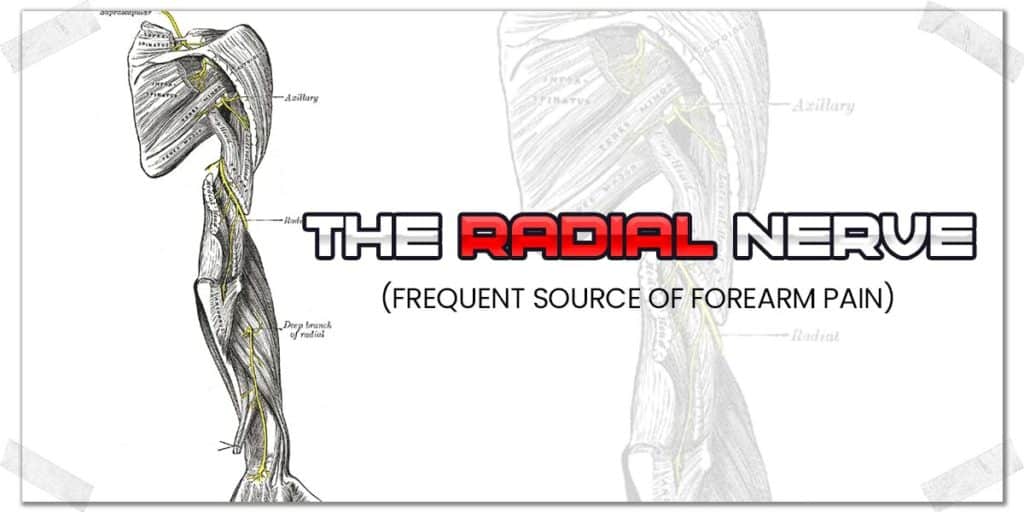
The radial nerve is one of three primary nerves that course throughout the entire arm. It arises from the nerve roots of the cervical spine from the levels of C5, C6, C7, C8 & T1 and runs all the way down to the back of the hand.
The radial nerve wraps around the upper arm bone (humerus) and runs right along with the forearm extensor muscles on its way down to the hand. Take note of this, as radial nerve tension/irritation is often mistaken for forearm extensor symptoms (but thankfully, there are ways to differentiate the discomfort).
Repetitive strain injuries
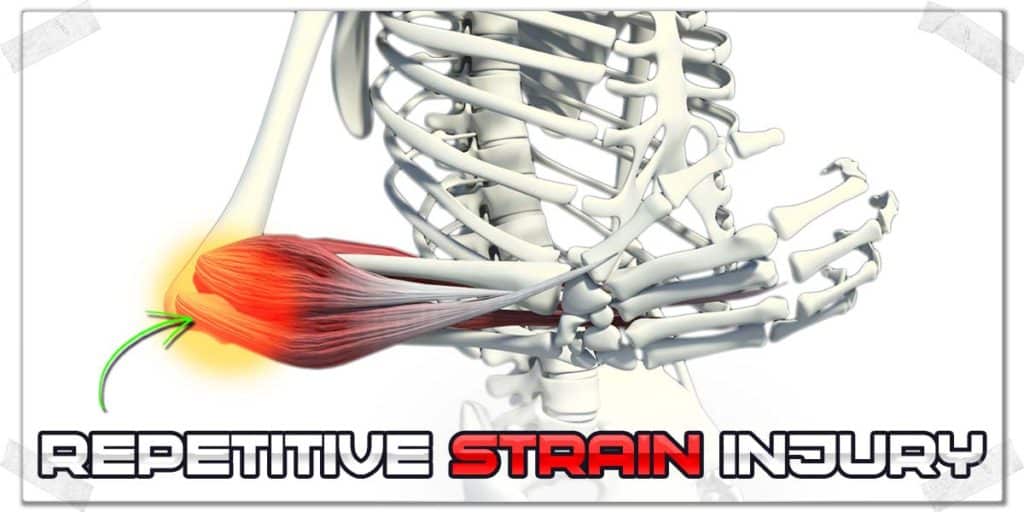
A repetitive strain injury (RSI) is exactly what it sounds like; it’s the painful result of performing too much movement, often with too much resistance based on what the injured tissues could effectively cope with during the activity.
When it comes to the forearm and elbow region, an RSI typically rears its ugly head with a condition known as lateral epicondylitis, or in layman’s terms — tennis elbow.
Tennis elbow, in a nutshell, is the painful condition that arises when the origin of your forearm extensors becomes irritated and unhealthy. The pain is most often felt when you make the forearm extensor muscles work hard, such as with the downward phase of the Zottman curl, where your forearm is in a palms-down position.
Repetitive strain injuries can be a bummer to deal with, especially if you don’t know which actions to take. If you want the details on what science says about effectively tackling this stubborn issue, consider taking some time to read the following journal articles (click to read):
- Repetitive Strain Injury (Van Tulder, Maurits, Antti Malmivaara, and Bart Koes, 2007) (PDF)
- Repetitive Strain Injury (Helliwell, P. S., and W. J. Taylor., 2004) (PDF)
While it can certainly take a bit of time and dedicated effort to get things under control, you just might be able to keep on curling throughout the process, provided you know how to make a few crucial changes. If you want to learn more on that, check out the section below!
Dealing with nerve tension
It’s not uncommon for specific nerves within the forearm region to become irritated, leading to pain or discomfort within the region. In the case of the Zottman curl, the nerve most often causing discomfort is the radial nerve.
Since the radial nerve runs down the upper arm (humerus) and wraps around the backside of the forearm, the pronated (overhand) position that the forearm moves into on the downward phase of the Zottman curl can be a provoking position for the nerve if it’s already irritated.
Nerve pain typically feels sharp, electrical, or stabbing in nature. It often feels like it travels a well-defined path (a hallmark feature of radicular pain).
If your pain is arising from the radial nerve (or the ulnar or median nerve, for that matter), you’ll want to work on performing neuromobilizations to help restore functional range and movement back to the nerve(s). Check out this fantastic video by the Physiotutors below for learning how to do basic mobilizations for each nerve:
How to keep on curling
If you’re keen on finding all the ways you can when it comes to keeping on with your curling (and who isn’t?), there are a handful of strategies that you might be able to implement right off the bat. If any of the following strategies work for you, consider implementing them in ways that your body appreciates.
Solution 1: Ditch overhand movements (for the time being)
If your elbow or forearm pain results from repetitive strain afflicting the common extensor muscles of your forearm, you’ll likely want to ditch the Zottman curl and any other overhand movements for the time being. Don’t worry; this likely won’t be for too long. But the fact of the matter is that if you continually keep exerting and stressing the already irritated forearm muscles or tendons beyond what they’re capable of enduring, you won’t be getting better.
Instead, take any overhand grip exercises you’ve been performing and perform them with either a neutral grip or, even more ideal, an underhand grip. By laying off the overhand-grip position, you won’t be stressing the forearm muscles to nearly as great an extent. This means you can continue working on building big, strong arms or an upper back while letting your forearm heal up.
Solution 2: Use a counterforce strap
A counterforce strap is the little band you see individuals wear around their upper forearm when they’re dealing with tennis elbow (lateral epicondylitis). If your forearm pain is either confirmed to be due to a case of tennis elbow, or your Zottman discomfort results in muscular discomfort just above the elbow joint, in the area where your extensor tendons attach to the bone, wearing a counterforce could be a profoundly helpful move worth making.
A counterforce strap acts in the same way that a capo does on the strings of a guitar neck; it creates a new anchor point so that force is not transmitted further up the arm, pulling on the otherwise irritated natural anchor point of the forearm tendons.
You likely don’t need to wear a counterforce strap at all times, instead just during any activities that might otherwise irritate your forearm. In fact, if your pain is mild in nature, you may find that you can perform Zottman curls and other overhand-grip exercises without pain if the counterforce strap is being used under the right conditions.
Solution 3: Switch to tempo-based curls
If your elbow or forearm pain only arises with heavier or near-maximal loads, you might be able to continue with your training without foregoing any of your current exercises or changing your grip if you lighten the load a bit.
Don’t worry — it’s still entirely possible to build muscle in your arms when performing lighter weight curls than you’d otherwise think. The key is to perform tempo-based training.
A greater length of time under tension when performing your exercises with a slightly lighter load will likely induce a significant amount of mechanical stress to the muscles to induce muscle hypertrophy, similar to traditional heavier sub-maximal training.
Tempo training works under the principle of manipulating what’s known as “time under tension” for the targeted muscles. While the details are far beyond the scope of this article, here’s a good starting point to try when it comes to performing challenging training for any of your resistance exercises, such as the Zottman curl:
- Use a load (weight) that’s approximately 50% of your 1RM (repetition maximum).
- Take two full seconds to curl the weight upwards.
- Take five seconds to lower the weight back down to the starting position.
- When in doubt, go even slower on the way up and on the way down.
- Perform 10-15 repetitions.
You should notice that your muscles become rather fatigued by performing the movement in an excessively slow manner without the traditionally heavier loads you might otherwise be using.
With any luck, it will allow you to continue performing the Zottman curl in a pain-free manner while also helping to provide an appropriate stimulus to the unhealthy tendons. This can be a great way to build strong arms while foregoing unnecessary stress and strain to the tendons (there’s some great science behind the efficacy of tempo-based training).
Solution 4: Use blood flow restriction training
I did my graduate thesis on blood flow restriction training, and I think it’s the bee’s knees. Aside from the fact that it has been shown to be effective for healthy and injured populations alike, it also works for the young and the old. Of course, you need to ensure that it’s safe for you to perform (literature has shown that it’s very safe when used on otherwise healthy populations and with the correct parameters).
Blood flow restriction training (BFR) has been shown to produce significant changes in muscle size and strength with lifting only 20-30% of an individual’s one-rep maximal weight. Traditional strength training requires approximately 60% to elicit the same effects.
What this intervention means for you is that unless your forearm or elbow pain is highly irritable, you’ll likely be able to perform pain-free Zottman, reverse, or hammer curls without any perceptible discomfort since you’ll be using a significantly lower amount of weight than with traditional training (yet you’ll still reap the rewards).
If you’re interested in giving it a go! There are different bands and systems that can be used to perform BFR training. Inexpensive (but much less precise methods) include using simple manual straps that you tighten or wrap around your limbs. However, my personal preference is pneumatic systems, such as the BStrong system.
If you’d like to save 10% on any BStrong purchases, use the code “JIMWITTSTROM” on the BStrong website at checkout!
(Please note: The above link to Bstrong is an affiliate link. I receive a small commission at no extra cost to you if you choose to purchase through this link).
Pneumatic systems using a sphygmomanometer allow for much more precise pressure control and cost only a small fraction of much more expensive systems such as the KAATSU master or Delphi system.
So, just make sure you read up on the basics while ensuring it’s appropriate for you (it likely is, provided you’re otherwise healthy).
To learn more, check out my in-depth articles:
- Blood Flow Restriction: Evidence And Uses For Injury Rehabilitation
- What is Blood Flow Restriction Training? How, Why And When to Use it
Final thoughts
If the Zottman curl, or even the hammer curl, for that matter, is giving you a bit of grief in your elbow or your forearm, don’t sweat it — just be smart with it. Take the tips within this article and use them as a starting point to determine what’s causing your discomfort and how to get it under control. With any luck, a few modifications will allow you to keep on curling while you work to resolve the issue.

Hi! I’m Jim Wittstrom, PT, DPT, CSCS, Pn1.
I am a physical therapist who is passionate about all things pertaining to strength & conditioning, human movement, injury prevention and rehabilitation. I created StrengthResurgence.com in order to help others become stronger and healthier. I also love helping aspiring students and therapists fulfill their dreams of becoming successful in school and within their clinical PT practice. Thanks for checking out my site!

